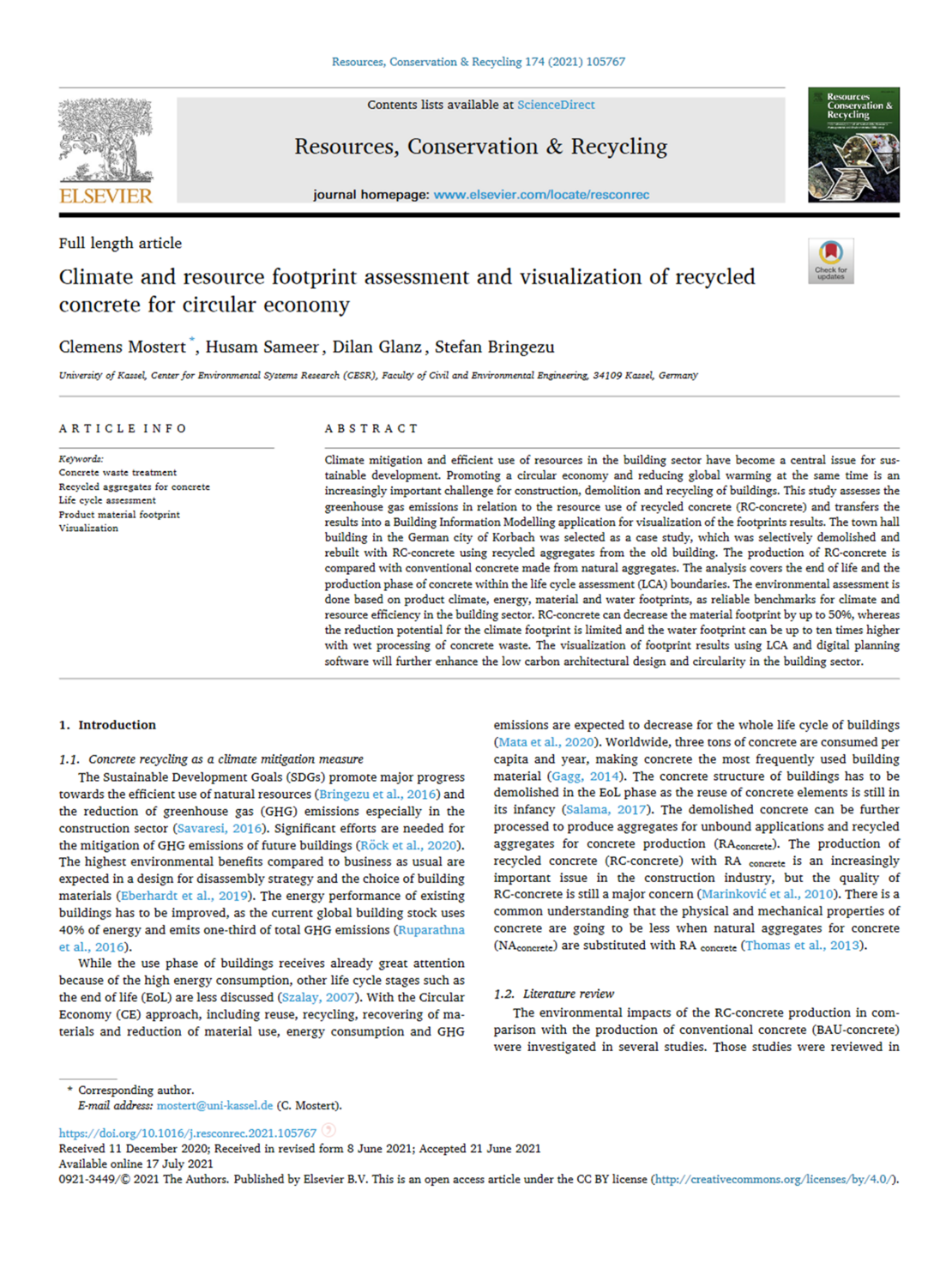Climate mitigation and efficient use of resources in the building sector have become a central issue for sustainable development. Promoting a circular economy and reducing global warming at the same time is an increasingly important challenge for construction, demolition and recycling of buildings. This study assesses the greenhouse gas emissions in relation to the resource use of recycled concrete (RC-concrete) and transfers the results into a Building Information Modelling application for visualization of the footprints results. The town hall building in the German city of Korbach was selected as a case study, which was selectively demolished and rebuilt with RC-concrete using recycled aggregates from the old building. The production of RC-concrete is compared with conventional concrete made from natural aggregates. The analysis covers the end of life and the production phase of concrete within the life cycle assessment (LCA) boundaries. The environmental assessment is done based on product climate, energy, material and water footprints, as reliable benchmarks for climate and resource efficiency in the building sector. RC-concrete can decrease the material footprint by up to 50%, whereas the reduction potential for the climate footprint is limited and the water footprint can be up to ten times higher with wet processing of concrete waste. The visualization of footprint results using LCA and digital planning software will further enhance the low carbon architectural design and circularity in the building sector.


